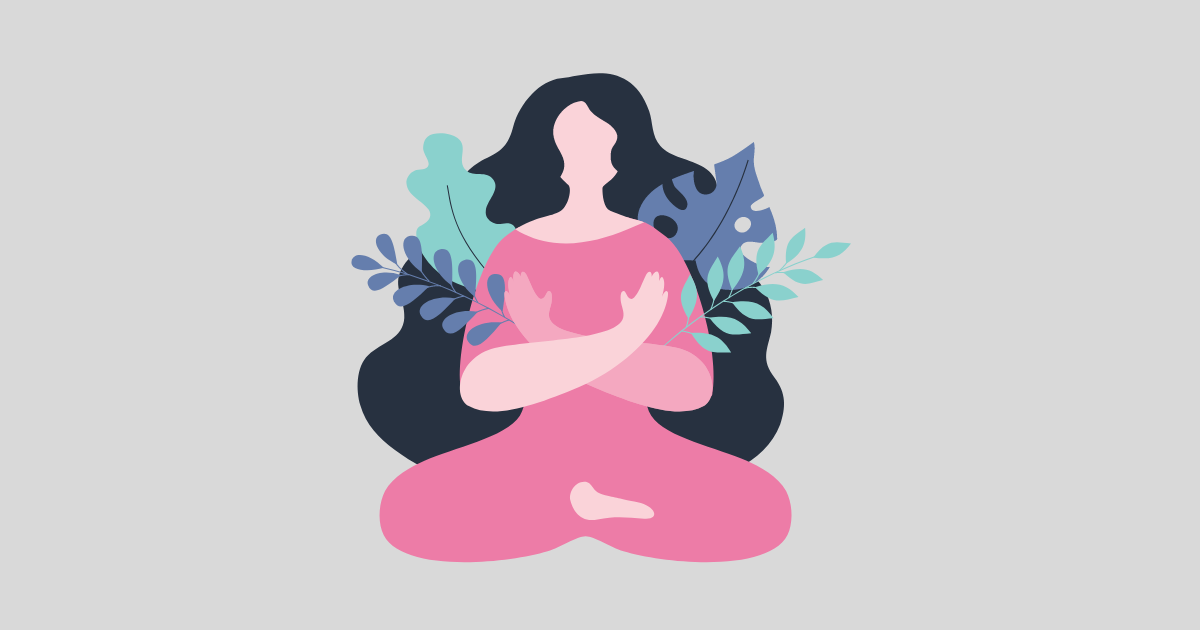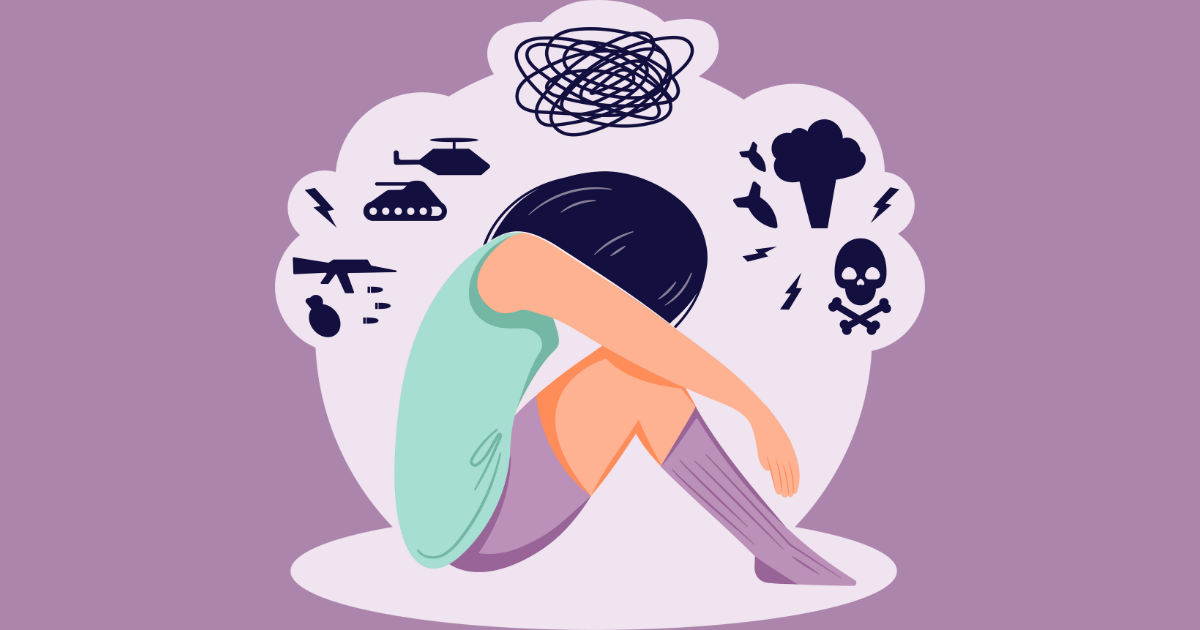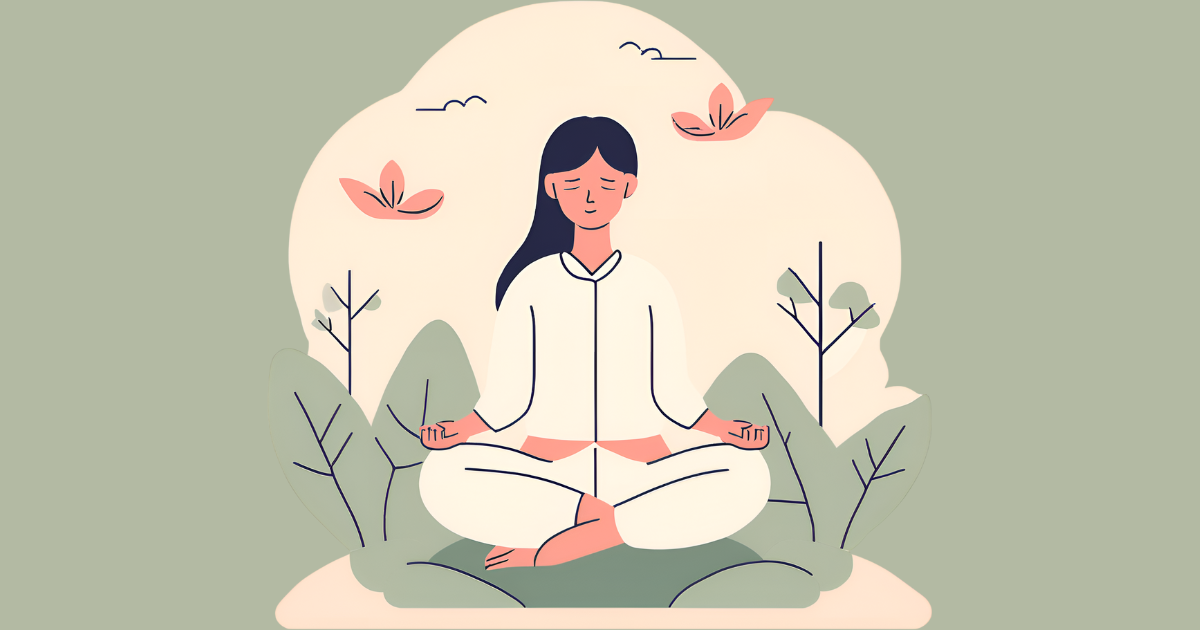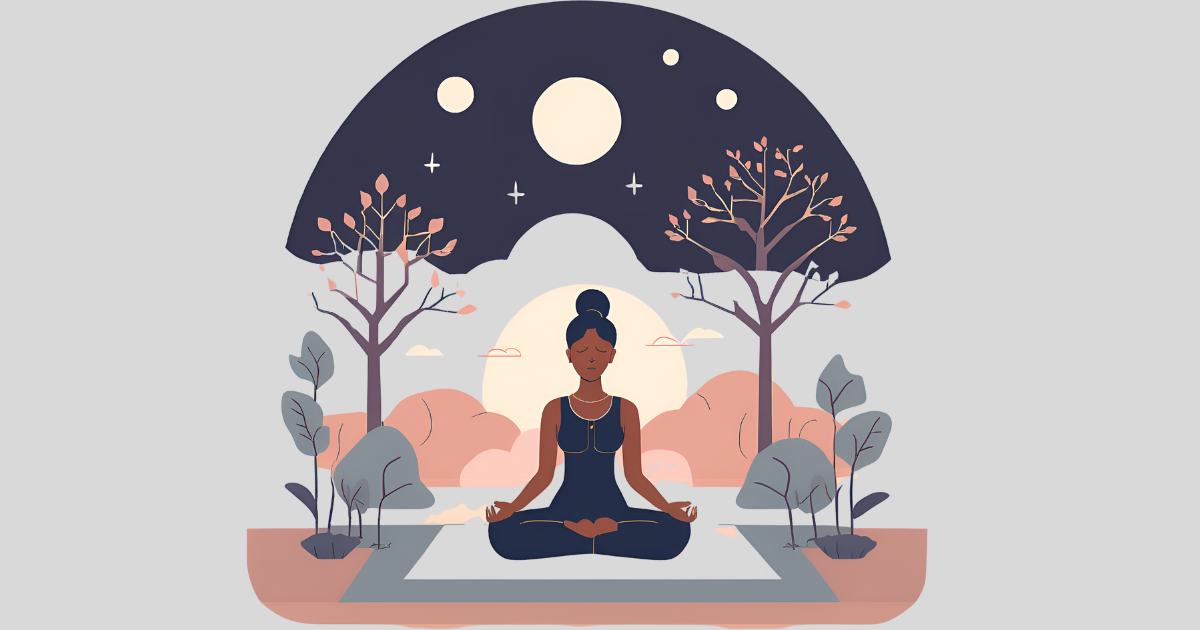Meditation is an ancient practice that focuses the mind to achieve mental clarity, relaxation, and heightened awareness. It has been practiced for thousands of years across different cultures and traditions, often for spiritual or religious purposes. The practice involves techniques such as focusing on the breath, repeating a mantra, or observing sensations, all aimed at quieting the mind and reducing distractions.
In modern times, meditation has gained widespread popularity for its numerous mental and physical health benefits. It is used to reduce stress, enhance focus, and promote emotional well-being. The practice can help lower stress hormone levels, improve immune function, and foster a more positive outlook on life. Additionally, meditation can enhance concentration, increase self-awareness, and support emotional regulation.
Overall, meditation is a versatile and accessible practice that offers a range of benefits, making it a valuable tool for improving overall well-being and mental health.
“In meditation, you are not trying to get anywhere; you are simply trying to be where you are.” – Jon Kabat-Zinn
Table of Contents
What is Meditation?
Meditation is a practice aimed at training the mind to focus and redirect thoughts for enhanced mental clarity and relaxation. It typically involves sitting in a comfortable position, closing the eyes, and concentrating on a specific object, thought, or activity. Common focal points in meditation include the breath or physical sensations.

The practice’s primary goal is to achieve a state of mental stillness and clarity, reducing distractions and intrusive thoughts. By regularly engaging in meditation, individuals can improve concentration, manage stress, and enhance overall well-being.
Core Elements of Meditation
- Focused Attention:
- The primary component of meditation is concentrating on a specific object, thought, or activity, such as breathing, a mantra, or visualization. This focus helps quiet the mind and reduce distractions.
- Relaxation:
- Meditation often involves physical relaxation, where the body is at ease, and tension is released. This can help reduce stress and promote a sense of calm.
- Awareness:
- A key aspect of meditation is developing an awareness of the present moment. This means being fully present and engaged with what is happening right now, without being distracted by thoughts of the past or future.
- Open-mindedness:
- Meditation encourages an open and non-judgmental attitude toward thoughts and feelings that arise during the practice. This allows for greater self-awareness and emotional balance.
Types of Meditation:
1. Mindfulness Meditation
Mindfulness meditation is a practice aimed at cultivating awareness of the present moment. Here’s a closer look at this technique, including its focus, method, and benefits:
Focus: Present Moment Awareness
Mindfulness meditation centers around being fully aware of the present moment. Instead of letting your mind drift to past regrets or future worries, this practice encourages you to immerse yourself in what is happening right now. The objective is to bring your attention to your immediate experiences and sensations.
Technique:
- Find a Comfortable Position: Embrace a comfortable position, whether sitting or lying down, feeling every fiber of your being relaxing yet remaining alert.
- Close Your Eyes: Gently, almost reverently, close your eyes, shutting out the outer world and diving deep into your inner sanctuary.
- Focus on Your Breath: Luxuriate in the rhythm of your breath. Savor the sensation of the air entering and exiting your nostrils or the rise and fall of your chest and abdomen.
- Observe Bodily Sensations: Expand this beautiful awareness to your entire body. Notice every sensation, every area of tension or discomfort, accepting them with compassionate curiosity.
- Acknowledge Thoughts and Feelings: As thoughts and feelings bloom, observe them with deep empathy and no judgment. Let them come and go, gently guiding your focus back to your breath or bodily sensations.
- Return to Your Focus: If your mind drifts, tenderly coax it back to your chosen focal point, be it your breath, bodily sensations, or the symphony of sounds surrounding you.
Benefits:
- Reduces Stress: Mindfulness meditation helps to lower stress levels by breaking the cycle of rumination and promoting relaxation.
- Improves Concentration: Regular practice enhances your ability to focus on tasks, reducing distractions and improving overall productivity.
- Enhances Emotional Regulation: By observing emotions without reacting, you develop better emotional balance and resilience, leading to improved emotional well-being.
Overall, mindfulness meditation is a simple yet powerful tool for managing stress, enhancing focus, and fostering emotional stability, making it a valuable addition to your daily routine.
“The mind is like a parachute; it works best when it’s open.” – Frank Zappa
2. Transcendental Meditation
Focus: Deep Relaxation
Transcendental Meditation (TM) is designed to achieve profound relaxation and mental calm.
Technique:
- Find a Quiet Space: Choose a quiet, comfortable place where you won’t be disturbed.
- Sit Comfortably: Sit with your back straight and relaxed, closing your eyes gently.
- Practice Twice Daily: Engage in TM for about 20 minutes, twice a day.
Benefits:
- Promotes Deep Relaxation: Helps achieve a state of profound rest and relaxation.
- Reduces Stress: Lowers stress levels by calming the nervous system.
- Improves Overall Well-being: Enhances mental clarity and emotional stability.
3. Loving-Kindness Meditation (Metta)
Focus: Cultivating Compassion and Love
Loving-Kindness Meditation, or Metta, focuses on developing feelings of love and compassion towards oneself and others.
Technique:
- Find a Comfortable Position: Sit comfortably with your eyes closed.
- Start with Yourself: Silently repeat phrases like “May I be happy, may I be healthy” directed towards yourself.
- Extend to Others: Gradually expand your focus to loved ones, acquaintances, and even those you find challenging, using similar phrases.
- Include the World: Extend your wishes of well-being to all beings everywhere.
- Repeat Regularly: Practice regularly to deepen feelings of compassion.
Benefits:
- Increases Compassion: Enhances feelings of empathy and kindness towards yourself and others.
- Reduces Negative Emotions: Helps diminish feelings of anger and resentment.
- Improves Relationships: Fosters positive interactions and strengthens personal connections.
4. Body Scan Meditation
Focus: Awareness of Bodily Sensations
Body Scan Meditation involves methodically focusing on different parts of the body to increase awareness and relaxation.
Technique:
- Lie Down or Sit Comfortably: Choose a comfortable position where you can relax.
- Close Your Eyes: Gently close your eyes to minimize distractions.
- Focus on Each Body Part: Start from your toes and work your way up, paying attention to each part of your body.
- Notice Sensations: Observe any sensations, tension, or discomfort in each area without trying to change them.
- Complete the Scan: Once you reach the top of your head, take a few moments to notice your overall body awareness.
Benefits:
- Enhances Body Awareness: Increases mindfulness of physical sensations and tension.
- Promotes Relaxation: Helps reduce physical tension and stress.
- Supports Emotional Balance: Encourages a greater sense of connection between mind and body.
“You should sit in meditation for 20 minutes every day—unless you’re too busy. Then you should sit for an hour.” – Old Zen Proverb
5. Zen Meditation (Zazen)
Focus: Observing Thoughts and Sensations
Zen Meditation, or Zazen, is a form of seated meditation that emphasizes observing thoughts and sensations in a specific posture.
Technique:
- Adopt the Zazen Posture: Sit cross-legged with your back straight and hands resting on your lap.
- Focus on Breathing: Pay attention to your breath, observing its natural rhythm.
- Observe Thoughts: Let thoughts come and go without attachment, simply observing them.
- Return to the Breath: If you become distracted, gently guide your focus back to your breath.
- Practice Regularly: Engage in Zazen for 20-30 minutes, ideally in a quiet space.
Benefits:
- Improves Mental Clarity: Enhances focus and cognitive function.
- Fosters Inner Peace: Promotes a sense of calm and stillness.
- Enhances Self-Awareness: Encourages deeper understanding of one’s thoughts and emotions.
6. Vipassana Meditation
Focus: Insight into the True Nature of Reality
Vipassana Meditation is aimed at gaining deep insight into the nature of reality and the nature of suffering.
Technique:
- Find a Quiet Place: Choose a calm environment free from distractions.
- Sit in a Comfortable Position: Sit with your back straight and your eyes closed.
- Observe Sensations: Focus on bodily sensations, noting their impermanence and the reactions they provoke.
- Practice Equanimity: Maintain a balanced and non-reactive awareness of sensations.
- Engage in Extended Retreats: Vipassana is often practiced in longer retreats for deeper insight.
Benefits:
- Promotes Deep Insight: Provides a profound understanding of the nature of suffering and impermanence.
- Reduces Suffering: Helps diminish attachment and aversion, leading to reduced suffering.
- Enhances Self-Awareness: Cultivates greater self-awareness and mental clarity.
7. Guided Meditation
Focus: Following a Guide’s Instructions
Guided Meditation involves following verbal instructions provided by a guide to achieve relaxation and mental clarity.
Technique:
- Choose a Guided Session: Select a guided meditation session based on your needs (e.g., stress relief, sleep, focus).
- Find a Comfortable Position: Sit or lie down comfortably in a quiet place.
- Listen to the Guide: Follow the instructions provided by the guide, which may include visualizations, breathing exercises, or relaxation techniques.
- Engage Fully: Focus on the guide’s voice and instructions to fully immerse yourself in the meditation.
- Reflect Afterwards: Take a moment to reflect on your experience after the session.
Benefits:
- Provides Structure: Offers guidance and structure, making it easier for beginners to practice.
- Addresses Specific Issues: Can be tailored to address particular issues like stress, sleep, or personal growth.
- Facilitates Relaxation: Helps achieve relaxation and mental clarity with external support.
8. Movement Meditation
Focus: Integrating Movement with Mindfulness
Movement Meditation involves practicing mindfulness through intentional, mindful movement, such as in yoga or Tai Chi.
Technique:
- Choose a Movement Practice: Select a practice such as yoga, Tai Chi, or Qigong.
- Engage in Mindful Movement: Move through the practice’s sequences, paying close attention to your body’s movements and sensations.
- Synchronize Breath: Coordinate your breath with the movements to enhance mindfulness.
- Focus on the Present Moment: Maintain awareness of each movement and breath, staying present throughout the practice.
- Practice Regularly: Incorporate movement meditation into your routine to build mindfulness and flexibility.
Benefits:
- Improves Physical Flexibility: Enhances physical flexibility and strength through mindful movement.
- Enhances Mindfulness: Integrates mindfulness into physical activity, improving overall awareness.
- Reduces Stress: Promotes relaxation and stress relief through synchronized movement and breath.
How to start a meditation practice for beginners
Starting a meditation practice can be a wonderful way to enhance mindfulness, reduce stress, and improve overall well-being. Here’s a simple guide to get you started:
1. Find a Comfortable Space
Choose a quiet and comfortable spot where you won’t be disturbed. This could be a corner of a room, a garden, or any place where you feel at ease.
2. Choose a Time
Decide on a time that works best for you. Many people find it helpful to meditate in the morning to set a positive tone for the day. However, any time that fits your schedule is fine.
3. Start Small
Begin with short sessions, around 5-10 minutes. As you get more comfortable, you can gradually increase the duration.
4. Sit Comfortably
Sit in a comfortable position, either on a chair with your feet flat on the ground or cross-legged on a cushion. Keep your back straight but not stiff, and rest your hands on your knees or in your lap.
5. Focus on Your Breath
Close your eyes and take a few deep breaths. Then, allow your breathing to return to its natural rhythm. Focus on the sensation of your breath as it enters and leaves your nostrils, or the rise and fall of your chest or abdomen.
6. Notice Your Thoughts
It’s normal for your mind to wander. When you notice your thoughts drifting, gently bring your focus back to your breath without judgment.
7. Use Guided Meditations
For beginners, guided meditations can be helpful. There are many apps and online resources with guided sessions that can guide you through the process.
8. Be Consistent
Consistency is key. Try to meditate at the same time every day. Even if you can only spare a few minutes, regular practice will help you build the habit.
9. Be Patient
Meditation is a practice, and it’s normal to feel distracted or restless at first. Be patient with yourself and remember that every session is beneficial, even if it doesn’t feel perfect.
10. Explore Different Techniques
There are various types of meditation, such as mindfulness, loving-kindness, and body scan. Explore different techniques to find what resonates with you.
Starting a meditation practice is a personal journey, and there’s no right or wrong way to do it. The most important thing is to start and make it a part of your daily routine.
Conclusion
Meditation offers a diverse array of practices, each with unique techniques and benefits tailored to different needs and goals. From the simplicity of mindfulness meditation to the structured approach of Transcendental Meditation, each method provides a pathway to enhanced mental clarity, emotional stability, and overall well-being.
Whether you seek to reduce stress, improve focus, or cultivate compassion, there’s a type of meditation that can support your journey. Mindfulness meditation helps anchor you in the present moment, while techniques like Loving-Kindness Meditation foster emotional warmth and empathy. Body Scan Meditation enhances physical awareness, and Zen Meditation encourages profound mental stillness.
For those interested in gaining deeper insights into their nature, Vipassana Meditation offers profound revelations about suffering and impermanence, while Guided Meditation provides structured support for various goals. Movement Meditation integrates mindfulness with physical activity, enhancing both mental and physical health.
Exploring these different types of meditation can help you find the practice that resonates most with you. As you incorporate meditation into your daily routine, you may discover a greater sense of peace, improved emotional regulation, and enhanced overall well-being. The journey of meditation is deeply personal, offering benefits that extend into every aspect of life. Embrace the practice that aligns with your needs and experience the transformative power of meditation.
Discover Together
Discover more from Positive Treasure
Subscribe to get the latest posts sent to your email.







